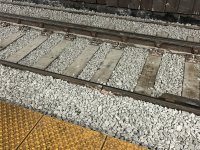bigeman312
Senior Member
- Joined
- Jul 19, 2012
- Messages
- 2,247
- Reaction score
- 2,035
This might be giving the T too much credit. They do these scans fairly regularly. From the discussions back when the GLX rails were found to be too close together, it looked like they do these scans twice a year, so they have very recent geometry scan data to compare to. It is also inconceivable the T would have decided on the massively disruptive year of shutdowns without this basic information. It doesn't sound right that they were concealing major track problems in, say, November but now they're telling the truth. I think all that T spokesperson was saying was "We looked at the tracks again, using our routine and standard tools, and we found more problems than we had six months ago."
How bad the new slow zones are, that kind of depends. If the new slow zones are showing up in sections that have already been shut down and overhauled, then that's a huge problem. Then, yeah, it would look like we're not making any progress, even after massive disruptions and repairs. From a quick scan, that doesn't seem to be the case. The new slow zones are in the bulk of the system that hasn't gone through shutdowns yet. It's not good to have more slow zones, but also, this should be kind of expected. The already-deteriorated sections of track will deteriorate even faster, and lots of maintenance efforts are being concentrated elsewhere. Also, hopefully, the kinds of defects they're finding are the those that will get fixed anyways when that track eventually gets its scheduled shutdown and overhaul.
Very good point. It appears the worst slow zones are:
- JFK -> N. Quincy
- Braintree -> Quincy Adams
- JFK <> Braintree is due for a 16 day closure in September
- Broadway <> N. Quincy is due for a 6 day closure in December
In fact, the only parts of the system that are done with their 2024 track work shutdowns are:
- Ashmont Branch (of Red Line)
- Green Line Extension
- North Station <> Heath St (E-Branch of Green Line)
- Brookline Hills <> Riverside (D-Branch of Green Line)
Last edited:




